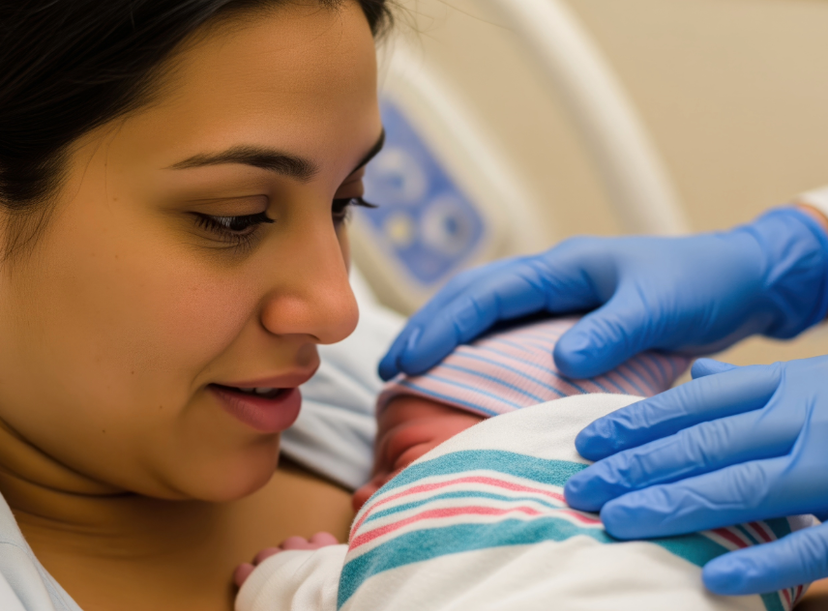Taking a proactive approach to Group B Streptococcus (GBS) screening for perinatal care
Explore the shifting landscape of antimicrobial resistance and Group B Streptococcus in this expert-led guest blog
16 Oct 2025
The global fight against antimicrobial resistance (AMR) has reached a critical juncture, with the World Health Organization (WHO) releasing its updated Bacterial Priority Pathogens List (BPPL) for 20241. A significant development for perinatal care specialists is the inclusion of Group B Streptococcus (GBS) in the Medium group of this list1.
Group B Streptococcus (GBS), or Streptococcus agalactiae, is a significant pathogen associated with severe infections in neonates, particularly sepsis and meningitis2. The growing prevalence of antibiotic resistance among GBS strains heightens the risk of Intrapartum Antibiotic Prophylaxis (IAP) failure, particularly due to the empiric reliance on beta-lactam antibiotics2.
The enduring threat of GBS in pregnancy
Group B Streptococcus is a bacterium that commonly colonizes the gastrointestinal tract and is part of the vaginal microbiome in some women3. While often asymptomatic, GBS can lead to invasive disease in pregnant women and is a leading cause of severe neonatal disease3.
Risks associated with GBS carriage include:
- For pregnant women: Urinary tract infections, amnionitis, endometritis, and tragically, miscarriages, stillbirths, and preterm deliveries4.
- For newborns: GBS is the most common cause of bacteremia, sepsis, pneumonia, and meningitis4.
According to the WHO, about 1 in 5 pregnant women worldwide carry or are colonized with group B strep5. Approximately 50% of these colonized women will transmit the bacteria to their newborns4. Without intrapartum antibiotic prophylaxis (IAP), 1–2% of those newborns will develop GBS Early-Onset Disease (EOD)4. Alarmingly, rates of mortality and morbidity related to GBS EOD are markedly higher among preterm newborns, with mortality rates of 19.2% compared to 2.1% in term newborns4.
The rise of antimicrobial resistance in GBS
Current prevention strategies for GBS involve screening pregnant women and administering IAP, primarily using beta-lactam antibiotics like penicillin and ampicillin4. This empiric therapy is based on the assumption that GBS is susceptible to these drugs4.
However, the WHO is now reporting increasing resistance rates to penicillin and beta-lactams in general1. This highlights the growing need for antimicrobial susceptibility testing and monitoring.
In many countries, a standard of care for all pregnant women is to be routinely tested for GBS with a vaginal/rectal swab test during the 36th or 37th week of each pregnancy unless their urine already cultured positive in the current pregnancy6.
Why is ongoing GBS testing, monitoring and AST crucial?
- Optimized IAP: Complete AST enables clinicians to choose the best IAP for individual patients, thereby significantly reducing the risk of treatment failure7,8. This move towards personalized, evidence-based treatment is essential in the face of rising resistance.
- Enhanced epidemiological surveillance: AST supports epidemiological tracking of resistance patterns8. This surveillance is vital for informing public health decision-making, planning, prevention, and control strategies for GBS at a broader level8.
The inclusion of GBS in the WHO Bacterial Priority Pathogens List is a clear signal: the time for proactive and comprehensive GBS monitoring, including phenotypic AST for resistance monitoring, is now.
References:
1. WHO Bacterial Priority Pathogens List, 2024: bacterial pathogens of public health importance to guide research, development and strategies to prevent and control antimicrobial resistance. Geneva: World Health Organization; 2024. Licence: Attribution-NonCommercial-ShareAlike 4.0 International
2. Hsu C.Y., Moradkasani S., Suliman M., Uthirapathy S., Zwamel A.H., Hjazi A., Vashishth R., Beig M. Global patterns of antibiotic resistance in group B Streptococcus: a systematic review and meta-analysis. Front Microbiol. 2025 Apr 16;16:1541524. PMID: 40342597 PMCID: PMC12060732 DOI: 10.3389/fmicb.2025.1541524
3. Russell N.J., Seale A.C., O'Driscoll M., O'Sullivan C., Bianchi-Jassir F., Gonzalez-Guarin J., et al. (November 2017). Maternal Colonization With Group B Streptococcus and Serotype Distribution Worldwide: Systematic Review and Meta-analyses. Clinical Infectious Diseases. 65 (suppl_2): S100 – S111. doi:10.1093/cid/cix658. PMC 5848259. PMID 29117327.
4. The American College of Obstetricians and Gynecologists. Prevention of Group B Streptococcal Early-Onset Disease in Newborns. Number 797 (Replaces Committee Opinion No. 782, June 2019. Reaffirmed 2022).
5. World Health Organization. Group B Streptococcus (GBS), Immunization, Vaccines and Biologicals. Accessed 1st July 2025.
6. Group B Streo International. Group B Strep awareness Toolkit https://www.groupbstrepinternational.org/gbs-awareness.html. Accessed 1st July 2025.
7. Boyer K.M., Gadzala C.A., Kelly P.D., Gotoff S.P., (November 1983). Selective intrapartum chemoprophylaxis of neonatal group B streptococcal early-onset disease. III. Interruption of mother-to-infant transmission. The Journal of Infectious Diseases. 148 (5): 810–816. doi:10.1093/infdis/148.5.810. PMID 6355318.
8. Genovese, C., D’Angeli, F., Di Salvatore, V. et al. Streptococcus agalactiae in pregnant women: serotype and antimicrobial susceptibility patterns over five years in Eastern Sicily (Italy). Eur J Clin Microbiol Infect Dis 39, 2387–2396 (2020). https://doi.org/10.1007/s10096-020-03992-8.
